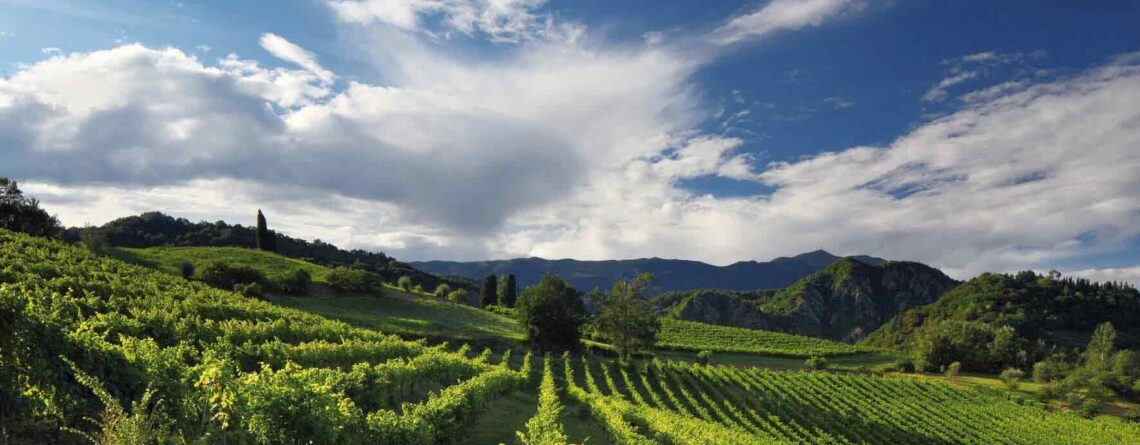After we posted the other day about the Casa Girelli Pinot Grigio delle Venezie DOC Canaletto A classic wine from the Italian Alps: Casa Girelli Canaletto Pinot Grigio delle Venezie, the Ethica Wines marketing team received several questions about the appellation, its history, and origin.
The Pinot Grigio delle Venezie became one of Italy’s most recently created appellations when it was made official in 2016. And it’s the country’s largest DOC, covering the regions of Friuli-Venezia Giulia, Veneto, and the province of Trento, and including the following provinces: Trento, Verona, Vicenza, Padova, Rovigo, Venezia, Belluno, Pordenone, Udine, Gorizia, and Trieste.
The idea behind this new appellation was to give generational and legacy growers of Pinot Grigio the opportunity to add small amounts of other white grape varieties to their blends.
Producers must use 85 percent Pinot Grigio and can add up to 15 percent of other authorized white grape varieties.

Historically, growers in those regions have often blended small amounts of other local grapes in their Pinot Grigio. It’s a practice that reflects local traditions because it allows the growers, winemakers, and bottlers to create distinctive wines from their areas. In other words, if everyone just used Pinot Grigio, the wines would taste mostly the same. But if winemakers can add — again, small amounts — local, traditional grape varieties, the wines from each region and province retain a distinctive quality that expresses the local terroir.
Each province has a list of authorized grape varieties. For sake of space, here’s the list of authorized grape varieties for Trento province (it’s the province that has the most overlap with other provinces):
- Bianchetta Trevigiana
- Boschera
- Chardonnay
- Glera
- Glera Lunga
- Grapariol
- Malvasia Istriana
- Manzoni Bianco
- Müller-Thurgau
- Perera
- Pinot Bianco
- Riesling Renano
- Riesling Italico
- Sauvignon (Blanc)
- Tocai Friulano
- Verdiso
- Verduzzo Friulano
- Verduzzo Trevigiano
- Incrocio Manzoni
- Marzemina Bianca
- Manzoni Moscato
- Moscato Bianco
Note that the DOC also allows for a Bianco delle Venezie, which includes wines made from 50 percent Chardonnay, Pinot Bianco, Müller-Thurgau, Garganega, Verduzzo, or Tocai Friulano, or a blend thereof.
Across this huge appellation, nearly all the wines are vinified in temperature-controlled stainless-steel tanks and aged in stainless steel before bottling. This helps to ensure the wines’ classic freshness and their intense fruit aromas and flavors.
Another thing that nearly all Pinot Grigio delle Venezie have in common is that the fruit for the wines is sourced from pebbly and stony “diluvial” soils (created by the flow of ancient rivers) or pebbly and stony “morainic” soils (created by ancient melting glaciers). There are also some spots within the appellation where the soils are volcanic in origin, like Verona province.






